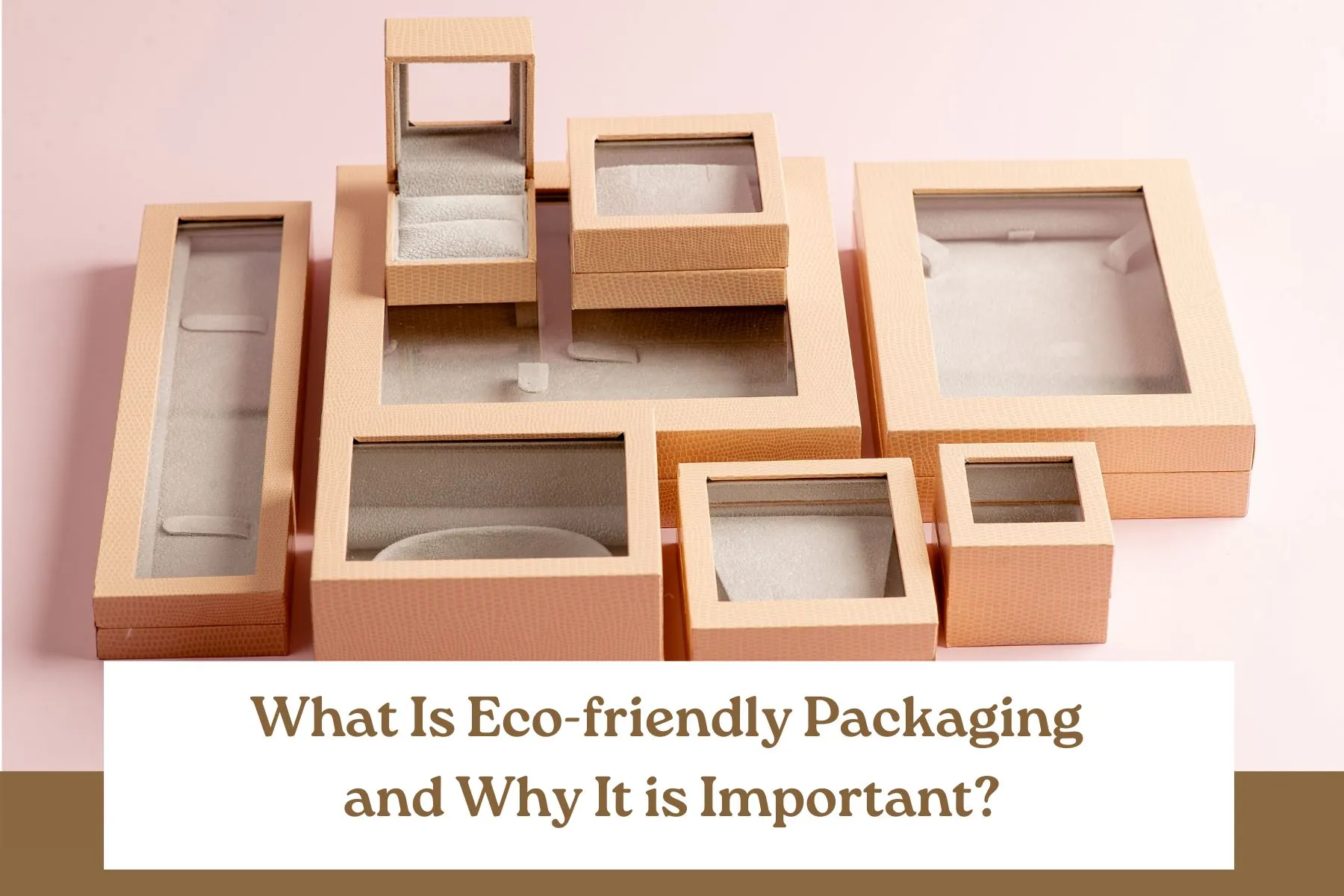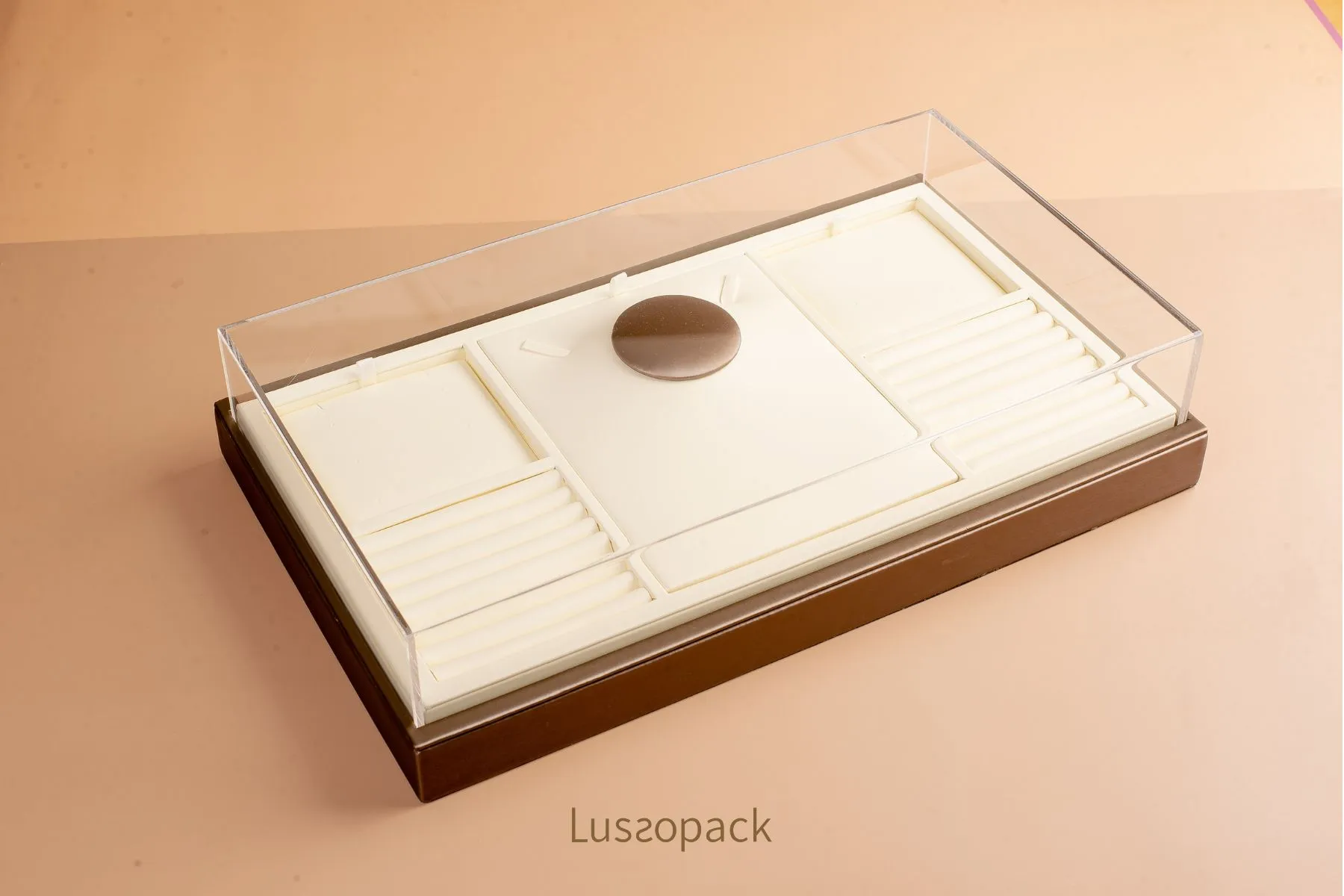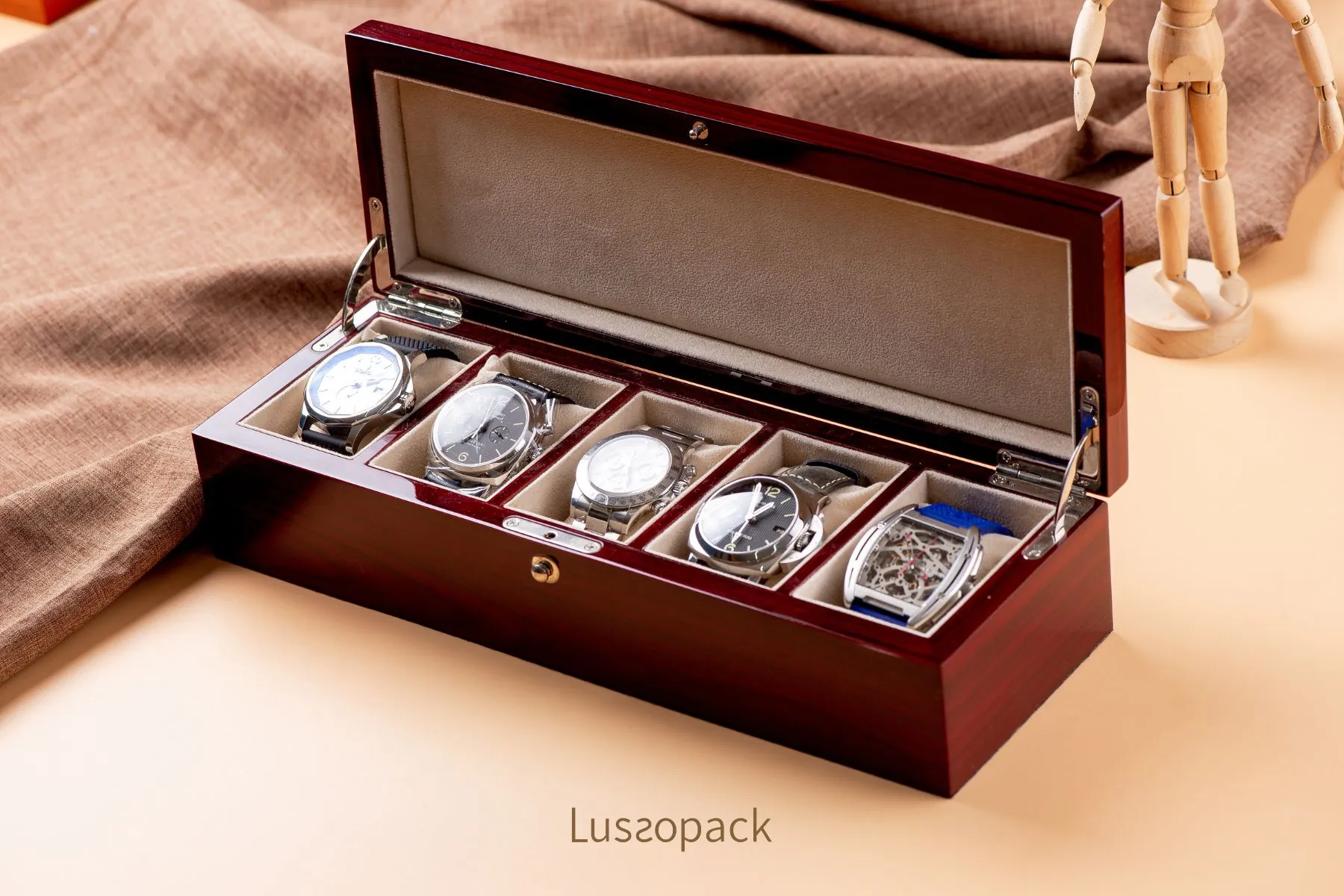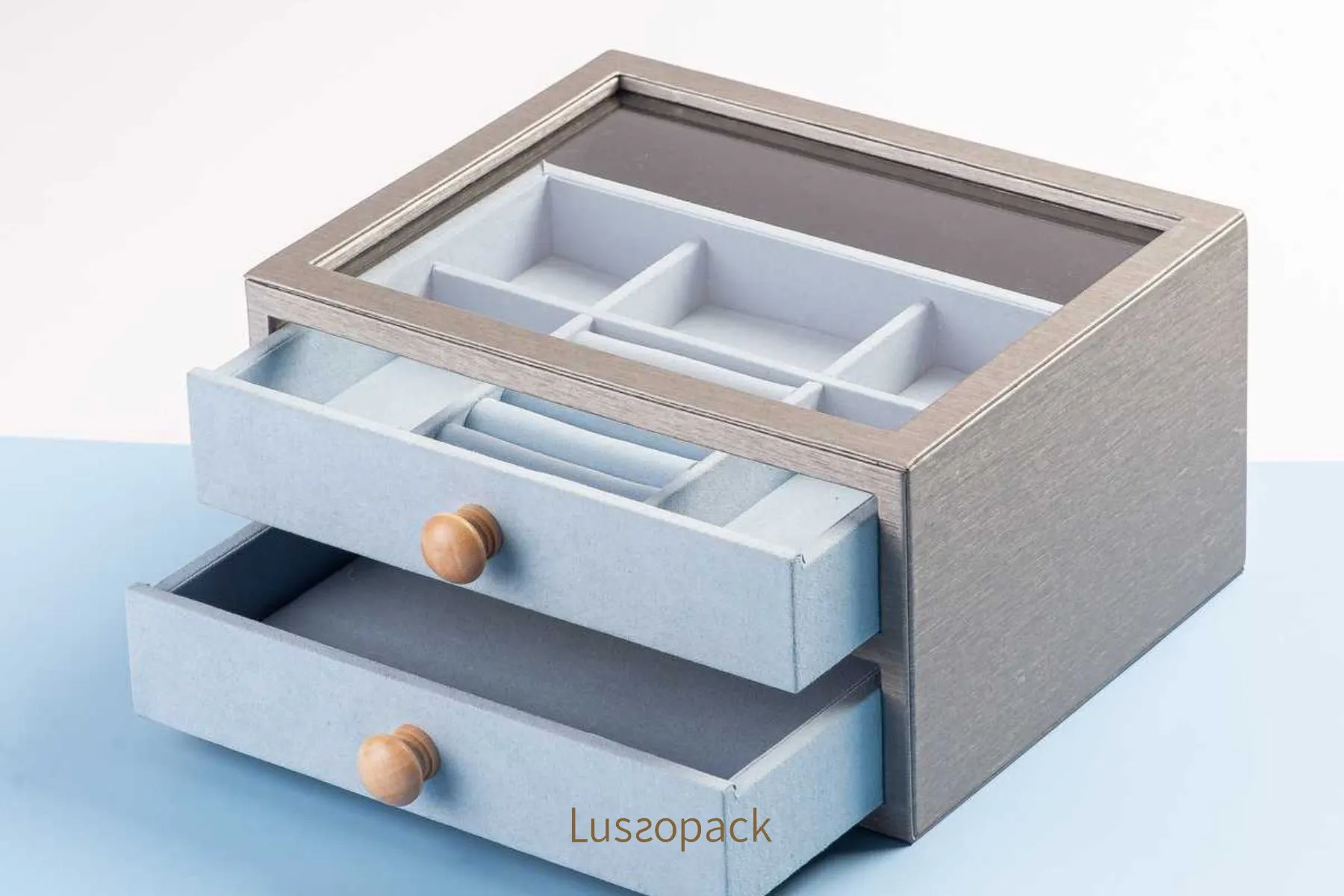What Is Eco-friendly Packaging and Why It is Important?
Article by : Lussopack

As global awareness of environmental issues grows, businesses are increasingly turning to eco-friendly packaging to address the ecological challenges posed by traditional packaging materials. Conventional packaging, particularly single-use plastics, has long been a major contributor to pollution and environmental degradation. In response, eco-friendly packaging provides a sustainable alternative that minimizes waste, reduces pollution, and meets the evolving expectations of consumers and regulators. This article explores the concept of eco-friendly packaging, its importance, and its multifaceted benefits to businesses and the environment.
What is eco-friendly packaging?

Environmentally friendly packaging involves using materials and methods with a lower environmental impact than traditional packaging options. The main objective is to minimize waste, reduce pollution, and conserve resources throughout a product’s lifecycle, from production to disposal.
Key characteristics of eco-friendly packaging include:
- Biodegradability and Compostability
Eco-friendly packaging materials can naturally decompose, integrating harmlessly into the environment. Compostable materials are designed to break down specifically in composting conditions. This means they can turn into nutrient-rich compost that can be used to enrich soil, thus supporting a circular economy. Using such materials helps reduce the accumulation of waste in landfills and decreases the overall environmental footprint.
- Recyclability
Eco-friendly packaging materials can be recycled either through standard municipal programs or specialized facilities, allowing them to be remade into new products, thus reducing the need for new resources. This process helps conserve raw materials and reduces the energy required for production. By choosing recyclable sustainable packaging, businesses contribute to a more sustainable cycle of resource use and waste management.
- Use of Renewable Resources
Materials like bamboo, sugarcane, or cornstarch-based plastics are commonly used because they are renewable and can be replenished quickly. These resources grow faster than traditional materials like wood or petroleum-based products, ensuring a steady supply without depleting natural reserves. Using renewable resources also supports agricultural industries and can provide economic benefits to regions where these crops are grown.
- Minimal Environmental Impact
The production process for sustainable packaging materials usually generates fewer greenhouse gases, uses less energy, and produces less pollution than traditional materials like plastic or styrofoam. These materials are also often produced without harmful chemicals or toxins, which is safer for both the environment and human health. The lower environmental impact extends through the product lifecycle, from manufacturing to disposal, making it a more sustainable choice.
- Lightweight, Efficient, and Durable
Designed to be lightweight and space-efficient, environmentally friendly packaging can lower transportation costs and emissions. Despite being eco-friendly, these materials still provide adequate protection for products during transit and use, preventing damage or spoilage. Their durability ensures that products reach consumers in good condition, increasing customer satisfaction and reducing the likelihood of returns due to damage.
- Reusable
Some eco-friendly packaging options are designed for multiple uses, helping to further cut down on waste. Reusable packaging can include items like glass jars, cloth bags, or sturdy containers that consumers can repurpose for other uses. This not only extends the lifecycle of the packaging but also encourages sustainable consumer behavior by reducing the need for single-use items.
Why is Eco-Friendly Packaging Important?

As the world becomes more environmentally conscious, the significance of environmentally friendly packaging has never been greater. Traditional packaging materials, especially single-use plastics, significantly contribute to pollution and environmental harm. Adopting eco-friendly packaging helps businesses comply with regulatory requirements and can lead to cost savings in the long run. Here’s a deeper look into why eco-friendly packaging is so essential.
- Reduces Environmental Impact
Traditional packaging materials, especially single-use plastics, significantly contribute to pollution and environmental harm. Eco-friendly packaging addresses these issues by utilizing more sustainable materials and minimizing waste, thereby reducing overall environmental degradation. By choosing materials that are biodegradable or compostable, such as those used in eco-friendly packaging boxes, businesses can help decrease the amount of waste that ends up in landfills and oceans, thus protecting wildlife and natural habitats. Biodegradable packaging is particularly effective in this regard, as it naturally decomposes over time without leaving harmful residues.
- Conserves Resources
By employing renewable and recyclable materials, eco-friendly packaging helps conserve valuable natural resources like fossil fuels and water. This conservation is vital for maintaining the balance of our ecosystems and ensuring the availability of these resources for future generations. For instance, using recycled paper and cardboard can reduce the demand for virgin materials, which in turn reduces deforestation and water consumption associated with paper production.
- Addresses Consumer Demand and Boosts Brand Image/li>
As consumers become more environmentally aware, there is a growing preference for products with sustainable packaging. Businesses that adopt sustainable packaging practices can attract this expanding market segment, meeting consumer expectations and enhancing customer loyalty. Utilizing sustainable packaging materials also showcases a company's commitment to environmental sustainability, boosting its reputation and appealing to consumers who value and support sustainable practices. This positive image can lead to increased brand loyalty and higher sales, as customers are more likely to support brands that align with their values.
- Meets Regulatory Requirements
With increasing environmental regulations worldwide, adhering to eco-friendly packaging standards helps businesses comply with these stricter requirements. This compliance not only avoids legal penalties but also positions companies as leaders in environmental responsibility. Staying ahead of regulatory trends can also provide a competitive advantage, as businesses that proactively adopt sustainable practices are often viewed more favorably by both regulators and consumers.
- Reduces Costs in the Long Run
Although eco-friendly materials may have higher upfront costs, they can lead to long-term savings. These savings come from reduced waste disposal fees, compliance with environmental regulations, and potentially lower transportation costs due to the lightweight and efficient design of sustainable packaging like eco-friendly packaging boxes. Additionally, investing in eco-friendly packaging can reduce the risk of future liabilities related to environmental cleanup or penalties, making it a financially sound decision in the long term.
What are the Benefits of Eco-Friendly Packaging?

Unlike traditional plastic packaging, eco-friendly packaging has a significantly more positive impact on the environment. It is produced more sustainably, providing a solution to reduce packaging waste. Let’s explore the top benefits for your business and the environment.
- Increases Storage Efficiency and Reduces Costs
Using packaging eco-friendly options encourages businesses to find more efficient ways to use space, starting with the product itself and extending to transportation. Increased storage efficiency allows for shipping more products at once, which can lower costs. Streamlining your operation by eliminating excess packaging can lead to significant savings and improved logistics.
- Multipurpose and Versatile Solutions
Focusing on eco-friendly product packaging often leads to discovering more versatile options. Instead of fitting your product into standard packaging sizes, you can develop or source eco-friendly alternatives that prioritize efficiency and adaptability. This tailored method can improve functionality, reduce waste, and improve the overall efficiency of your packaging solutions.
- Free From Toxins and Allergens
Traditional packaging materials are typically synthetic and can contain harmful chemicals, which are detrimental to both the environment and consumers. Eco-friendly packaging options are generally non-toxic and made from biodegradable materials that are safe and allergen-free, ensuring a healthier choice for consumers and the planet.
- Easily Disposable and Reusable
Eco-friendly packaging is designed for easy disposal or reuse. It is often biodegradable and/or recyclable, providing consumers with several disposal options. Whether it's composting, recycling, or repurposing, eco-friendly packaging makes it easy for consumers to dispose of it responsibly, reducing the overall waste footprint. The use of biodegradable packaging has become increasingly popular among environmentally conscious businesses and consumers, as it offers a sustainable solution to the growing problem of packaging waste.
How does Sustainable Packaging Help the Environment?
Eco-friendly packaging significantly supports sustainability efforts by leveraging materials and practices that are less harmful to the environment than traditional packaging options.
- Reduced Environmental Impact and Pollution
Eco-friendly packaging uses materials that have a lower environmental impact compared to conventional packaging like plastic or styrofoam. This includes using recycled, biodegradable, or compostable materials that are less harmful to the planet. Traditional packaging materials, particularly plastics, can release harmful chemicals into the environment during production and breakdown. Eco-friendly product packaging is designed to minimize or eliminate these harmful effects, thereby reducing pollution and protecting ecosystems.
- Resource Conservation and Lower Carbon Footprint
By utilizing recycled materials, eco-friendly packaging reduces the need for new resources, such as trees for paper-based packaging and petroleum for plastic-based packaging. Producing eco-friendly materials generally consumes less energy than traditional packaging production. For example, manufacturing recycled paperboard uses less energy compared to creating new paper, which results in a lower carbon footprint and fewer greenhouse gas emissions. This conservation effort helps preserve raw materials and ensures these resources remain available for future generations.
- Encourages Sustainable Practices and Innovation
The adoption of environmentally friendly packaging promotes sustainable practices among businesses and consumers. It raises awareness about the importance of reducing waste and choosing environmentally friendly alternatives, fostering a culture of sustainability. The increasing demand for eco-friendly packaging drives innovation and research in sustainable materials and packaging technologies. This ongoing development leads to advancements in environmentally friendly packaging solutions, further contributing to sustainability.
- Regulatory Compliance, Reputation, and Positive Consumer Perception
Using eco-friendly product packaging helps businesses comply with environmental regulations and demonstrate their commitment to sustainability. This compliance can enhance their reputation and attract environmentally conscious consumers who prioritize sustainable brands. With growing environmental concerns, consumers appreciate and support companies that take steps to reduce their environmental impact. Using eco-friendly packaging can improve a brand’s perception, leading to greater customer loyalty and positive brand recognition.

Lussopack set a high standard for sustainable packaging companies. Our dedication to sustainability is evident in our use of biodegradable, recyclable, and compostable materials. Lussopack’s innovation supports a circular economy by ensuring our products can be reintegrated into the environment safely and efficiently. Key initiatives by Lussopack include the use of renewable resources such as bamboo and sugarcane, which are rapidly renewable and reduce dependence on fossil fuels. Our eco-friendly packaging solutions are designed to be lightweight yet durable, optimizing transportation efficiency and reducing carbon footprints. Moreover, we actively avoid harmful chemicals in our production processes, ensuring our products are safe for both the environment and human health.
Join us in our mission to create a sustainable future. Explore our range of eco-friendly packaging solutions today and see how you can make a difference with Lussopack.
Interesting Blogs

How Sustainable Packaging Minimize Ecological Damage

How to Make a Ring Box That Increases Product Value

8 Creative Tips to Make Surprising Luxury Watch Packaging

Packaging for Footwear
What Is Eco-friendly Packaging and Why It is Important?
Article by : Lussopack

As global awareness of environmental issues grows, businesses are increasingly turning to eco-friendly packaging to address the ecological challenges posed by traditional packaging materials. Conventional packaging, particularly single-use plastics, has long been a major contributor to pollution and environmental degradation. In response, eco-friendly packaging provides a sustainable alternative that minimizes waste, reduces pollution, and meets the evolving expectations of consumers and regulators. This article explores the concept of eco-friendly packaging, its importance, and its multifaceted benefits to businesses and the environment.
What is eco-friendly packaging?

Environmentally friendly packaging involves using materials and methods with a lower environmental impact than traditional packaging options. The main objective is to minimize waste, reduce pollution, and conserve resources throughout a product’s lifecycle, from production to disposal.
Key characteristics of eco-friendly packaging include:
- Biodegradability and Compostability
Eco-friendly packaging materials can naturally decompose, integrating harmlessly into the environment. Compostable materials are designed to break down specifically in composting conditions. This means they can turn into nutrient-rich compost that can be used to enrich soil, thus supporting a circular economy. Using such materials helps reduce the accumulation of waste in landfills and decreases the overall environmental footprint.
- Recyclability
Eco-friendly packaging materials can be recycled either through standard municipal programs or specialized facilities, allowing them to be remade into new products, thus reducing the need for new resources. This process helps conserve raw materials and reduces the energy required for production. By choosing recyclable sustainable packaging, businesses contribute to a more sustainable cycle of resource use and waste management.
- Use of Renewable Resources
Materials like bamboo, sugarcane, or cornstarch-based plastics are commonly used because they are renewable and can be replenished quickly. These resources grow faster than traditional materials like wood or petroleum-based products, ensuring a steady supply without depleting natural reserves. Using renewable resources also supports agricultural industries and can provide economic benefits to regions where these crops are grown.
- Minimal Environmental Impact
The production process for sustainable packaging materials usually generates fewer greenhouse gases, uses less energy, and produces less pollution than traditional materials like plastic or styrofoam. These materials are also often produced without harmful chemicals or toxins, which is safer for both the environment and human health. The lower environmental impact extends through the product lifecycle, from manufacturing to disposal, making it a more sustainable choice.
- Lightweight, Efficient, and Durable
Designed to be lightweight and space-efficient, environmentally friendly packaging can lower transportation costs and emissions. Despite being eco-friendly, these materials still provide adequate protection for products during transit and use, preventing damage or spoilage. Their durability ensures that products reach consumers in good condition, increasing customer satisfaction and reducing the likelihood of returns due to damage.
- Reusable
Some eco-friendly packaging options are designed for multiple uses, helping to further cut down on waste. Reusable packaging can include items like glass jars, cloth bags, or sturdy containers that consumers can repurpose for other uses. This not only extends the lifecycle of the packaging but also encourages sustainable consumer behavior by reducing the need for single-use items.
Why is Eco-Friendly Packaging Important?

As the world becomes more environmentally conscious, the significance of environmentally friendly packaging has never been greater. Traditional packaging materials, especially single-use plastics, significantly contribute to pollution and environmental harm. Adopting eco-friendly packaging helps businesses comply with regulatory requirements and can lead to cost savings in the long run. Here’s a deeper look into why eco-friendly packaging is so essential.
- Reduces Environmental Impact
Traditional packaging materials, especially single-use plastics, significantly contribute to pollution and environmental harm. Eco-friendly packaging addresses these issues by utilizing more sustainable materials and minimizing waste, thereby reducing overall environmental degradation. By choosing materials that are biodegradable or compostable, such as those used in eco-friendly packaging boxes, businesses can help decrease the amount of waste that ends up in landfills and oceans, thus protecting wildlife and natural habitats. Biodegradable packaging is particularly effective in this regard, as it naturally decomposes over time without leaving harmful residues.
- Conserves Resources
By employing renewable and recyclable materials, eco-friendly packaging helps conserve valuable natural resources like fossil fuels and water. This conservation is vital for maintaining the balance of our ecosystems and ensuring the availability of these resources for future generations. For instance, using recycled paper and cardboard can reduce the demand for virgin materials, which in turn reduces deforestation and water consumption associated with paper production.
- Addresses Consumer Demand and Boosts Brand Image/li>
As consumers become more environmentally aware, there is a growing preference for products with sustainable packaging. Businesses that adopt sustainable packaging practices can attract this expanding market segment, meeting consumer expectations and enhancing customer loyalty. Utilizing sustainable packaging materials also showcases a company's commitment to environmental sustainability, boosting its reputation and appealing to consumers who value and support sustainable practices. This positive image can lead to increased brand loyalty and higher sales, as customers are more likely to support brands that align with their values.
- Meets Regulatory Requirements
With increasing environmental regulations worldwide, adhering to eco-friendly packaging standards helps businesses comply with these stricter requirements. This compliance not only avoids legal penalties but also positions companies as leaders in environmental responsibility. Staying ahead of regulatory trends can also provide a competitive advantage, as businesses that proactively adopt sustainable practices are often viewed more favorably by both regulators and consumers.
- Reduces Costs in the Long Run
Although eco-friendly materials may have higher upfront costs, they can lead to long-term savings. These savings come from reduced waste disposal fees, compliance with environmental regulations, and potentially lower transportation costs due to the lightweight and efficient design of sustainable packaging like eco-friendly packaging boxes. Additionally, investing in eco-friendly packaging can reduce the risk of future liabilities related to environmental cleanup or penalties, making it a financially sound decision in the long term.
What are the Benefits of Eco-Friendly Packaging?

Unlike traditional plastic packaging, eco-friendly packaging has a significantly more positive impact on the environment. It is produced more sustainably, providing a solution to reduce packaging waste. Let’s explore the top benefits for your business and the environment.
- Increases Storage Efficiency and Reduces Costs
Using packaging eco-friendly options encourages businesses to find more efficient ways to use space, starting with the product itself and extending to transportation. Increased storage efficiency allows for shipping more products at once, which can lower costs. Streamlining your operation by eliminating excess packaging can lead to significant savings and improved logistics.
- Multipurpose and Versatile Solutions
Focusing on eco-friendly product packaging often leads to discovering more versatile options. Instead of fitting your product into standard packaging sizes, you can develop or source eco-friendly alternatives that prioritize efficiency and adaptability. This tailored method can improve functionality, reduce waste, and improve the overall efficiency of your packaging solutions.
- Free From Toxins and Allergens
Traditional packaging materials are typically synthetic and can contain harmful chemicals, which are detrimental to both the environment and consumers. Eco-friendly packaging options are generally non-toxic and made from biodegradable materials that are safe and allergen-free, ensuring a healthier choice for consumers and the planet.
- Easily Disposable and Reusable
Eco-friendly packaging is designed for easy disposal or reuse. It is often biodegradable and/or recyclable, providing consumers with several disposal options. Whether it's composting, recycling, or repurposing, eco-friendly packaging makes it easy for consumers to dispose of it responsibly, reducing the overall waste footprint. The use of biodegradable packaging has become increasingly popular among environmentally conscious businesses and consumers, as it offers a sustainable solution to the growing problem of packaging waste.
How does Sustainable Packaging Help the Environment?
Eco-friendly packaging significantly supports sustainability efforts by leveraging materials and practices that are less harmful to the environment than traditional packaging options.
- Reduced Environmental Impact and Pollution
Eco-friendly packaging uses materials that have a lower environmental impact compared to conventional packaging like plastic or styrofoam. This includes using recycled, biodegradable, or compostable materials that are less harmful to the planet. Traditional packaging materials, particularly plastics, can release harmful chemicals into the environment during production and breakdown. Eco-friendly product packaging is designed to minimize or eliminate these harmful effects, thereby reducing pollution and protecting ecosystems.
- Resource Conservation and Lower Carbon Footprint
By utilizing recycled materials, eco-friendly packaging reduces the need for new resources, such as trees for paper-based packaging and petroleum for plastic-based packaging. Producing eco-friendly materials generally consumes less energy than traditional packaging production. For example, manufacturing recycled paperboard uses less energy compared to creating new paper, which results in a lower carbon footprint and fewer greenhouse gas emissions. This conservation effort helps preserve raw materials and ensures these resources remain available for future generations.
- Encourages Sustainable Practices and Innovation
The adoption of environmentally friendly packaging promotes sustainable practices among businesses and consumers. It raises awareness about the importance of reducing waste and choosing environmentally friendly alternatives, fostering a culture of sustainability. The increasing demand for eco-friendly packaging drives innovation and research in sustainable materials and packaging technologies. This ongoing development leads to advancements in environmentally friendly packaging solutions, further contributing to sustainability.
- Regulatory Compliance, Reputation, and Positive Consumer Perception
Using eco-friendly product packaging helps businesses comply with environmental regulations and demonstrate their commitment to sustainability. This compliance can enhance their reputation and attract environmentally conscious consumers who prioritize sustainable brands. With growing environmental concerns, consumers appreciate and support companies that take steps to reduce their environmental impact. Using eco-friendly packaging can improve a brand’s perception, leading to greater customer loyalty and positive brand recognition.

Lussopack set a high standard for sustainable packaging companies. Our dedication to sustainability is evident in our use of biodegradable, recyclable, and compostable materials. Lussopack’s innovation supports a circular economy by ensuring our products can be reintegrated into the environment safely and efficiently. Key initiatives by Lussopack include the use of renewable resources such as bamboo and sugarcane, which are rapidly renewable and reduce dependence on fossil fuels. Our eco-friendly packaging solutions are designed to be lightweight yet durable, optimizing transportation efficiency and reducing carbon footprints. Moreover, we actively avoid harmful chemicals in our production processes, ensuring our products are safe for both the environment and human health.
Join us in our mission to create a sustainable future. Explore our range of eco-friendly packaging solutions today and see how you can make a difference with Lussopack.
Interesting Blogs

How Sustainable Packaging Minimize Ecological Damage

How to Make a Ring Box That Increases Product Value

8 Creative Tips to Make Surprising Luxury Watch Packaging
